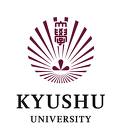Dealing with Fragmented and Widespread Antitrust Harm - Perspectives from the EU and Japan
Abstract
“Ripples of harm” that “flow through the Nation’s economy” is how the effects of antitrust violations have been described (Blue Shield of Virginia v. McCready, 457 U.S. 465 (1982)). Many antitrust violations affect not only those who directly purchase an overcharged product, but also those downstream: distributors, retailers and ultimately consumers. Tracing the amount and locus of the harm throughout the distribution chain can be a daunting and costly task.
The Japanese experience with antitrust damages actions illustrates this. Some of Japan’s most notorious antitrust cases were brought by indirect purchasers: large numbers of consumers sought damages from the members of a cartel that fixed the prices for heating fuel (tōyu), a product which went through several resellers before reaching consumers. The lawsuits dragged on for over a decade and ultimately the plaintiffs recovered nothing (Kai v. Nippon Sekiyu K.K., 1005 Hanreijihō 32 (Tokyo High Ct., July 17, 1981), aff’d 1239 Hanreijihō 3 (Sup. Ct., July 2, 1987); Satō v. Sekiyu Renmei, 997 Hanreijihō 18 (Yamagata D. Ct., March 31, 1981, rev’d 1147 Hanreijihō 19 (Sendai High Ct., March 26, 1985), aff’d sub nom. Nippon Sekiyu K.K., v. Satō 1340 Hanreijihō 3 (Sup. Ct. December 8, 1989)).
These cases offer a glaring illustration of the difficulties inherent in indirect purchaser litigation. At the same time, they also reveal why indirect purchaser litigation may be valuable after all: (1) at least the affected consumers had access to a forum where their claims were heard and, (2) direct purchasers never sued, presumably because of their close ties with their suppliers.
Because indirect purchaser litigation is complex and costly, many scholars argue that we shouldn’t even bother. Trying to achieve compensation for indirect purchasers may be a noble goal, but it is also highly impractical, expensive and downright impossible in many cases. The U.S. Supreme Court agreed: it denied standing to indirect purchasers and allowed direct purchasers to sue for the entire overcharge.
However practical and sensible that solution may be, it is unlikely that it will ever be adopted in the EU or Japan. Too many legal and political forces are pulling in the opposite direction. Legal constraints include the European Court of Justice’s case law, which seems to have read into the EU treaties a right to compensation for “any individual” harmed by an antitrust violation. There is also, especially in continental Europe and Japan, a strong reticence towards using the tort system for anything other than compensation and an aversion to a system that allows some parties (direct purchasers) to receive an “unjust enrichment”. On the political level, the European Commission has – perhaps out of political pragmatism – chosen the path of compensation over deterrence. The European Parliament has backed that choice and so have consumer groups and business groups.
Since indirect purchaser litigation is here to stay, there is a need to examine the tools by which it can be made as effective as possible. The determination of damages is one of the key difficulties in indirect purchaser litigation, so tools to facilitate that aspect will be the main focus of the analysis.
This paper will:
(1) illustrate the difficulties inherent in indirect purchaser litigation through an analysis of the Japanese oil cartel cases;
(2) explain why, in spite of the difficulties inherent in indirect purchaser litigation, the EU and Japan are unlikely ever to restrict indirect purchaser litigation;
(3) examine the existing tools in Japan (e.g. Art. 248 Code of Civil Procedure) and the EU to make indirect purchaser litigation workable and consider whether new tools are needed.

